East Asia in the Middle Ages | History - Islam and the Rise of Islamic Empires | 9th Social Science : History: The Middle Ages
Chapter: 9th Social Science : History: The Middle Ages
Islam and the Rise of Islamic Empires
Islam and the Rise of
Islamic Empires
Prophet Mohammad
established Islam. Islam gave a message of brotherhood. Mohammad laid stress on
the equality of all those who were Muslims. This message of equality and
brotherhood had great appeal not only for the Arabs, who were divided into
warring tribes, but also for people in other parts of the world. However, faced
with persecution in his place of birth, Mohammad and his followers moved to the
city of Yethrib. The flight of Mohammad from Mecca in 622 AD (CE) is called Hijrat
in Arabic. In honour of his coming, the people of Yethrib renamed the city to
Madinat-un-Nabi-the city of the Prophet. It is now known as Medina. Mohammad
died ten years after the Hijrat (AD (CE) 632). By the time of his death,
united under a common faith, the Arabs became a powerful force.
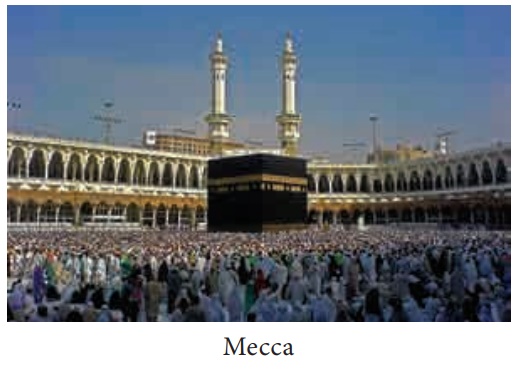
(a) Arabian
Abu Bakr and Omar who
succeeded Prophet Mohammad as Khalif or Caliph (both religious and
temporal leader) laid the foundation for an Islamic Empire. In a short period
of time, the Arabs defeated both the Eastern Roman Empire and the Sassanid King
of Persia. Jerusalem, the holy city of Jews and Christians, was won by the
Arabs, and the whole of Spain and Persia came under the new Arab Empire.
Islam advocated
simplicity and equality. These two ideas impressed people fed up with the old
order of oppression and exploitation. The Arabs easily overran many regions.
Egyptians had suffered much under the Roman Empire and so they opted for Arabs.
Led by the General Tariq, the Arabs, after conquering Morocco and Africa,
crossed into Europe and took Spain which they ruled for many hundreds of years.
The Arabs, until then largely nomads from the deserts, became the rulers of a
mighty empire. They were called Saracens (from sahra and nashin -
the dwellers of the desert).
Birth of Sunni and Shia Sects
The quarrel for the
leadership of Arabia led to a division in Islam. The two sects formed out of
the division were the Sunnis and Shias. The Sunnites, Sunni Muslims, maintained
that the head of the Islamic state and successor to the Prophet should be
elected by representatives of the whole body of believers. The Shiites, the
followers of Shia sect, opposed elevation to any highest political and
religious office other than those related to the Prophet by blood or by
marriage.
Rule of Ommiad or Umayyad dynasty
The Caliphs, belonging
to a branch of MohammadŌĆÖs family, known as Ommiads or Umayyads ruled for about
100 years. Damascus was their capital. They developed a new style of
architecture known as Saracenic architecture. The arches, the pillars, and the
minarets and domes came to India later and blended with Indian ideas.
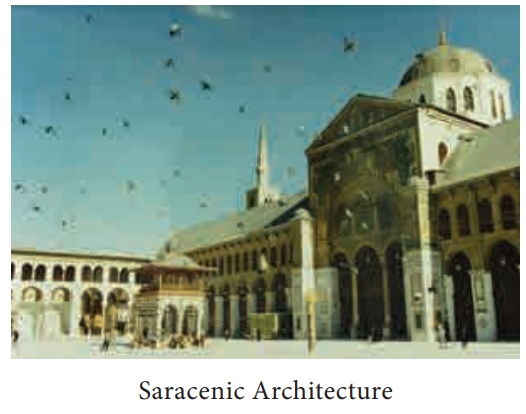
The Muslim Arabs carried
Islam far and wide. But while they were fighting at distant lands, the Arabs at
home were quarrelling. Ali, the son-in -law of Prophet Mohammad and his son
Hussein were murdered. Umayyads were overthrown by Abbasids. This branch
descended from Prophet MohammadŌĆÖs uncle Abbas and hence his followers were
called Abbasids.
Rule of Abbasids
Abbasid rule began in
750 A.D. (C.E.) assuming the title of ŌĆ£the Commander of the FaithfulŌĆØ, Abbasid
Caliph wielded authority as any other Emperor. The Abbasids tried to rival the
old empires in splendour. The capital was shifted from Damascus to Baghdad in
Iraq.
Baghdad- a city known
as the city of Arabian Nights, ŌĆśwas a vast city of palaces and public offices
and schools and colleges, and great shops and parks and gardens. The merchants
carried on a vast trade with the East and West. Visitors came to Baghdad from
all over the world, especially learned men and students and artists Nehru, Glimpses
of World History.
ArabsŌĆÖ Scholarly Pursuits
Abbasid Caliphs did not
attempt to conquer new lands. Instead they tried to consolidate the Empire.
They were more interested in scholarly pursuits. The Arabs had a scientific
spirit of inquiry. In some subjects like medicine and mathematics they learnt
much from India. Many Arab students went to Takshashila, which was still a
great university for specialized medicine. Indian scholars and mathematicians
came in large numbers to Baghdad. Sanskrit books on medicine and other subjects
were translated into Arabic. In medicine and surgery, Arab physicians and
surgeons earned a great reputation.
(b) Disintegration of Arab Empire and Rise of Seljuq Turks
The Abbasid Empire was
at the height of its glory during the reign of Harun-al-Rashid. Soon after his
death, the Arab Empire started disintegrating. Independent kingdoms arose
everywhere. The Caliph became more and more powerless to control those
kingdoms. The Turks (known as Seljuq Turks), who had become Muslims, succeeded
in taking possession of Baghdad. They also defeated the Byzantine army of
Constantinople and posed a challenge to the European states. The Christian
pilgrims to the holy city of Jerusalem were put to a lot of hardships by the
Turks. The resultant conflict led to the Crusades.![]()
![]()
![]()
![]()
(c) Crusades and Fall of Seljuq Turks
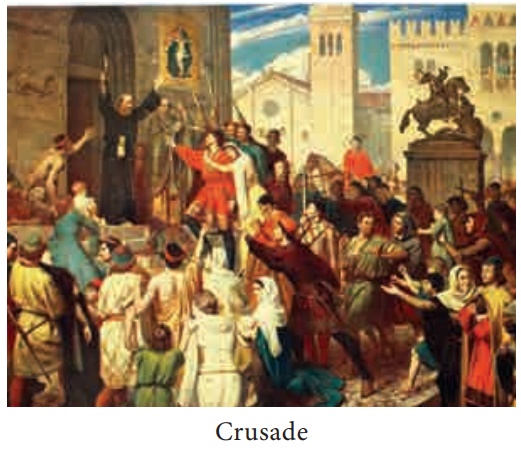
The Pope and the Church
called upon all the Christian peoples of Europe to march to the rescue of the
ŌĆ£holy cityŌĆØ (Jerusalem). The Crusaders had to fight against the Seljuq Turks
who controlled those parts. The struggle between Christianity and Islam
beginning in 1095 continued for nearly 200 years and is called the Crusades.
The Crusades did not
achieve the desired end. Jerusalem continued to remain in Ottoman hands for
another 700 years. This continuous fighting associated with Crusades weakened
the Seljuq Turks. The Mongol invasion from the East side-lined this cause and
Christians and Muslims alike started shifting their attention towards the
advancing Mongols, led by Chengiz Khan. The destruction of Baghdad in
1258 A.D. (C.E.), by the Mongols, put an end to what remained of the Abbasid
Empire.

(d) Impact of Crusades
Crusades ended the
feudal relations. Many of the nobles who went to East to take part in the
Crusades either stayed too long a period or did not return. The serfs took
advantage of their absence to break away from their bondage to the soil.
Increasing demand for products of the East led to expansion of trade. Venice,
Genoa and Pisa emerged as important commercial centres in
the Mediterranean region. Constantinople ceased to be the middle man in the trade
between the East and the West. The elimination of powerful nobles had its
influence in strengthening the monarchy in France and England. One notable
outcome of Crusades was the loss of prestige suffered by Pope and Papacy.
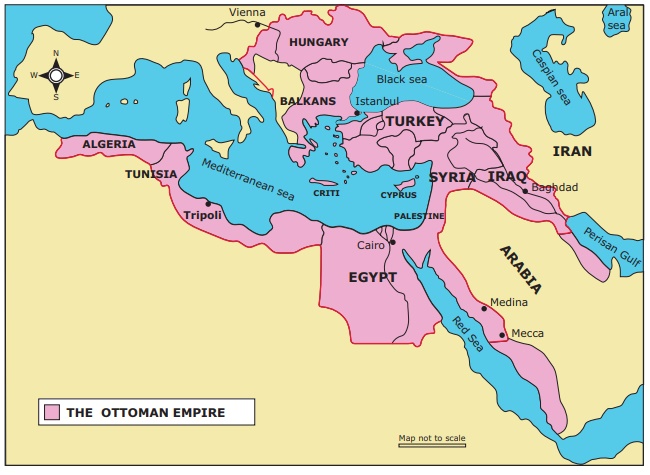
Mongols and Chengiz Khan
Mongols were nomads.
They came into Europe from the Steppes of Asiatic Russia. They were herdsmen.
The Mongols were experts in warfare and produced a remarkable chief, Chengiz
Khan. He was a great military genius. His religion was Shamanism, a worship of
the ŌĆ£Everlasting Blue Sky. MongolsŌĆÖ hold over Russia for about 300 years made
Russia technologically backward from the rest of Europe until the end of Middle
Ages.ŌĆØ
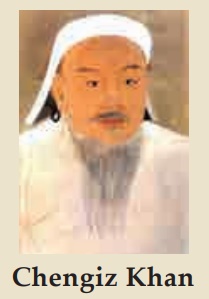
Related Topics